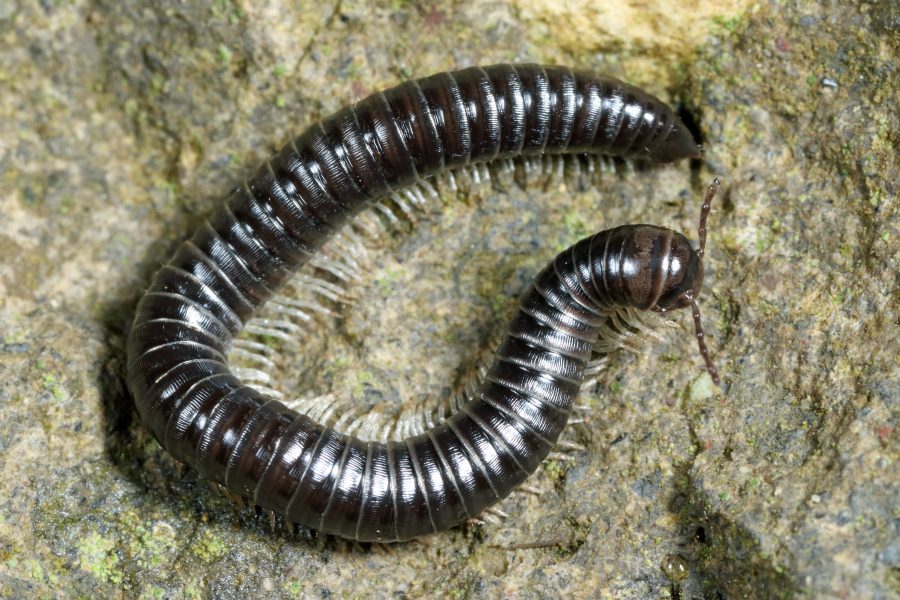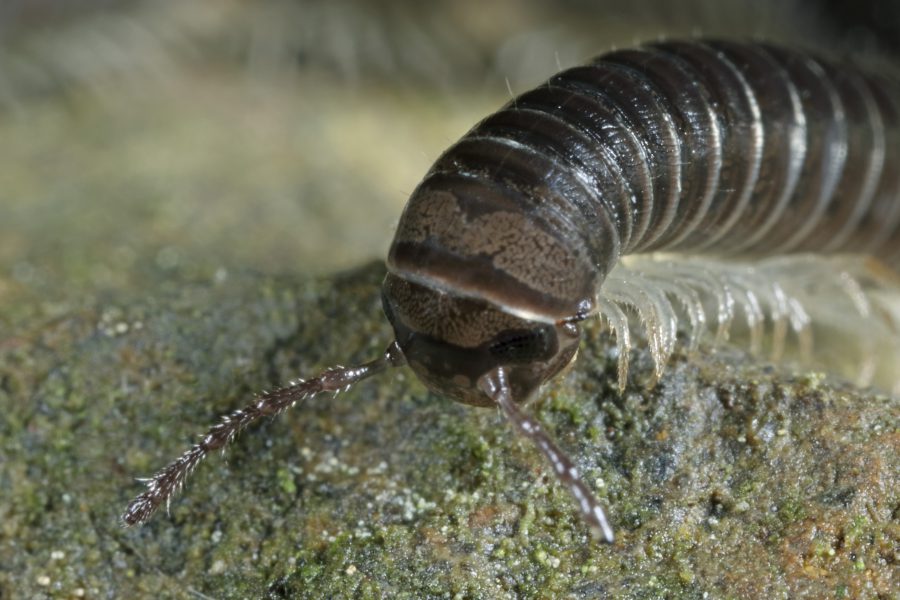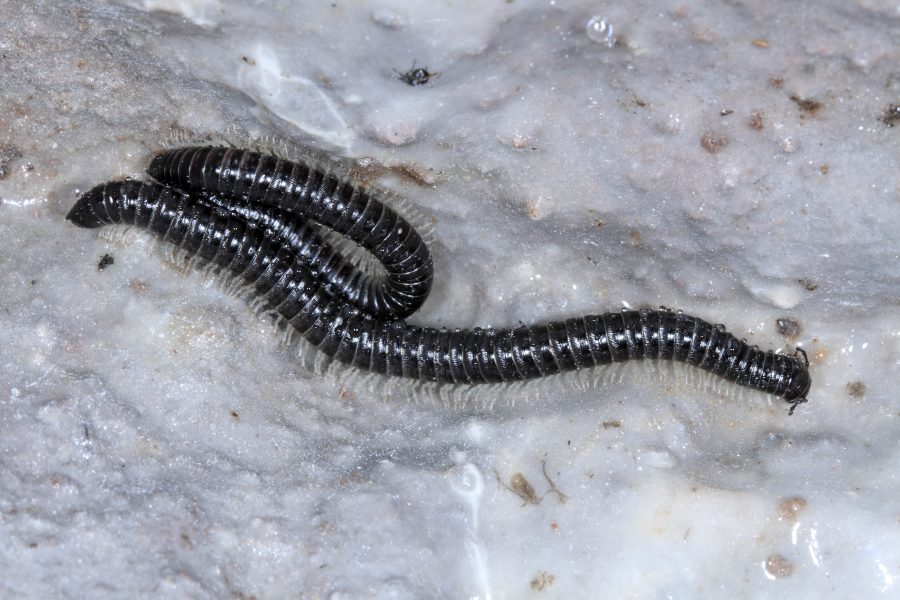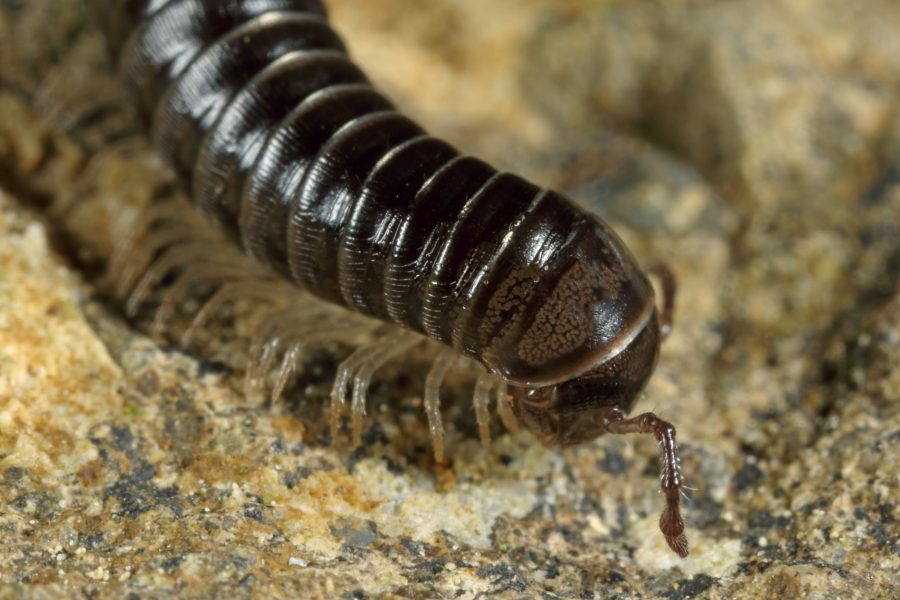
White-legged Snake Millipede - Cave Animal of the Year 2018
Introduction
The White-legged Snake Millipede (also called "Black Millipede") was first described in 1815 by the British zoologist William Elford Leach. He published the animal under the name Julus niger in the scientific journal "The Transactions oft the Linnean Society of London".
The animals may be found in natural caves, mining galleries and rock cellars all year round, where they may even form stable populations. For this reason, the White-legged Snake Millipede was chosen as Cave Animal of the Year 2018. The White-legged Snake Millipede represents a large number of species, which are dependent on sheltered and frost-free subterranean retreats.
Description
The White-legged Snake Millipede belongs to the class Diplopoda, which is characterised by two pairs of legs on each segment, where it is a member of the family Julidae. The animals are 20 to 50 mm long, brownish black to deep black with conspicuous pale legs. Juveniles are pale brown, with darker sides and a dark longitudinal line on the back.The body of these animals consists of 41-56 segments.
The White-legged Snake Millipede is basically a forest species, which also ventures out into open landscape, where it inhabits predominantly complexes of bushes. In limestone areas it also inhabits cracks, fissures and caves, where it is found even into the dark zone. These millipedes can reach an age of 6 to 7 years, sexual maturity is reached after 1,5 to 2 years. The White-legged Snake Millipede is a nocturnal inhabitant of the leave litter and tree bark, it's nightly radius of action is around 10 m, where it climbs even trees, bushes and rocks. It is the fastest of all native millipedes, with a speed of up to 24 mm per second. When threatened, the White-legged Snake Millipede shows a typical fright and flight reaction: Lying on its back or sides, it wriggles snake-like to escape from predators and find a hiding place.
The main food source of this millipede is the leaf litter, but wood, moss and needle litter is eaten as well. Cave populations feed mainly on organic material transported into the cave.
Distribution
The White-legged Snake Millipede is found in all of Germany except for the Northern Part of the North German Flatland, and is known from all cave regions in Germany. Within Europa, its distribution includes France, Spain, the Benelux States, Switzerland, Austria, Czechia, Ireland and Great Britain.
In Germany, the species is known from all cave areas, where it may penetrate deep into the dark zone of caves.




